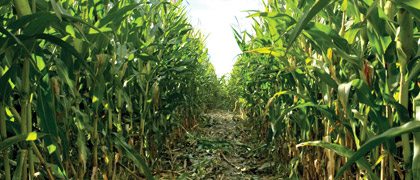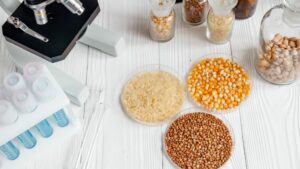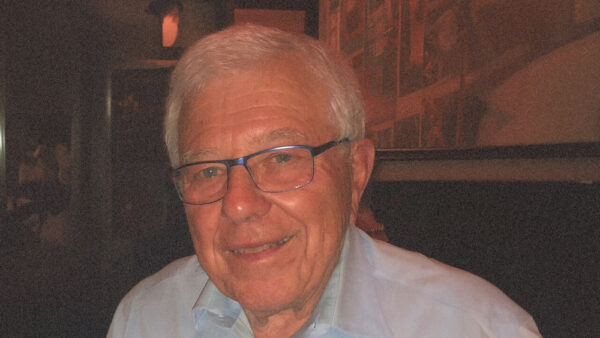Pathways to Agricultural Development
Few in the United States today would dispute the fact that the seed industry is now one of global scale and importance. This is true for the future commercial success of many within the industry. This truth also extends beyond the commercial sector and applies to the future well-being of countless millions of people around the world. Both are important. How you choose to embrace these truths on a day-to-day basis is important as you chart an intentional course of action for yourself or your company to participate in agricultural development.
Do you favor a commercial-focused pathway that can extend your current business operational model to faraway places in order to more fully develop an international or global portfolio? This might be dubbed the international business development pathway.
Might you prefer a pathway geared to build a stronger infrastructure (systems of education, governance or transportation) in other countries that can ultimately be expected to lead to improved food production practices and perhaps future commercial or trade opportunities? In a traditional sense, this describes the international agricultural development pathway.
Reflect upon the IBD and IAD pathways as they speak to you on a personal level as well as in your professional role in the seed industry.
Some may make an early (or late) career choice to follow the somewhat ill-defined IAD pathway to agricultural development. Others, by virtue of their professional positions, may simply get assigned a role that closely follows the IBD pathway—and be thrown into the fray. Over time, people accumulate new personal and professional experiences in context of our changing world. As a result, they may view the pathways, and maybe even their roles, differently. Does this seem all too familiar?
Agricultural development is not an arena best viewed as being one that is simply either “right or wrong” or “black or white.” It’s not that simple. Agricultural development viewed under an aura of varying “shades of gray” is probably more appropriate. While the IAD and IBD pathways are not necessarily mutually exclusive, for simplicity first view them independently. Ultimately, the custom-made pathway you choose to follow may contain elements of both.
When considering the international business development model, future commercial success of the seed industry will be measured in dual terms of developing more business activity and in making business activity more profitable. Achievement, on a sustained basis, is the goal. Many, if not most, engaged in the seed industry today find themselves in this category. Most consider this to simply be “business as usual.”
This pathway can be characterized in a number of ways that are relatively easy to measure. Objective benchmarks can be established along the way to track progress. Time frames for IBD activities generally are of a fairly short-term nature and may be referenced in months, years or even periods of 10 to 20 years.
An initial short-term objective to reach the goal of increasing business activity may be to identify six candidates in a new region, of which two can be qualified as potential commercial partners, over the course of eight months. Or, to reach a sales objective of a stated number of units for the next planting season across a specific geography. Perhaps an objective might be to attain a pre-determined level of market share by a target date. Sound familiar?
Different metrics are required to measure progress toward objectives associated with efforts to reach goals related to increased and sustainable profitability; for example, the cost of goods sold or the value of product returns. The corporate return on total investment or on the research investment may be of utmost importance at the company’s upper management level.
|
THE PATHWAYS YOU CREATE AND CHOOSE TO FOLLOW MAY WELL LEAD YOU TO NUMEROUS OPPORTUNITIES TO EXPERIENCE THE REWARDS OF MAKING ONGOING AND MEANINGFUL CONTRIBUTIONS TO THE DEVELOPMENT OF AGRICULTURE. |
With respect to the international agricultural development pathway, in a purist sense, the success of IAD efforts will be measured in terms of their ability to foster the successful creation and implementation of improved means to help people increase food production capacities and to achieve greater food security. Achievement, on a sustained basis, is the goal.
Seed may or may not play an integral role from the onset of a given development project. However, seed, being a primary agricultural input, would be expected to be a key component within a developing agricultural industry. And all agricultural industries are changing and can be considered as “developing.” They just do so at different rates, over different periods of time and in many different ways.
Progress along this pathway is certainly more difficult to measure and, perhaps, to characterize. Benchmarks tend to be more subjective and generally of a long-term nature. Multiple five- or 10-year periods, tracked over a few decades, may serve as the time frame for reference points.
For example, to reach an objective of increasing capacity to produce food might include enhancing the agronomic knowledge of outreach and extension personnel who work with smallholder farmers in regions of Asia. Other objectives may center upon designing or modernizing water management systems, or in facilitating railroads to operate more efficiently in moving agricultural inputs and better distributing local surplus production to deficit regions or market opportunities. Perhaps a relative ranking change on the Index of Economic Freedom or the introduction of improved agricultural inputs, such as fertilizer, planting seed or pest control technologies, may be the objectives. The possibilities are endless.
By first considering the two pathways independently and later viewing them in tandem, as they often occur in practice, one may gain a richer appreciation of agricultural development. For example, an IBD seed initiative designed to make high-quality planting seed of adapted varieties available to smallholder farmers in an underserved region of Africa will also contribute to infrastructure development of the region. Concurrently, a non-seed-related IAD project may foster infrastructure development over time that can ultimately support a vibrant seed industry.
As a reader of Seed World, you are most likely a professional heavily engaged in the agricultural seed industry. You may already be following either an IBD or IAD pathway to agricultural development. Perhaps you may embark upon a pathway as your professional life continues to present you with new opportunities and challenges. Many pathways lie before you professionally and personally. Beyond your many professional contributions to agriculture, you might consider ways that you and your family can contribute to increasing global food production capacity and improving food security for the well-being of others.
Reflect upon the IBD and IAD pathways as they speak to you on a personal level as well as in your professional role in the seed industry. Modify them to create a personalized pathway to fully reflect who you are and the role to which you aspire based on your responsibilities, abilities, beliefs and personality. The pathways you create and choose to follow may well lead you to numerous opportunities to experience the rewards of making ongoing and meaningful contributions to the development of agriculture.
Agriculture, particularly the seed sector, remains a dynamic and developing indu
stry—ever-changing and constantly evolving. You play a vital role. Do it well!
Dennis Thompson is dedicated to delivering solutions and empowering people and organizations to solve complex problems related to international agricultural development and global food security. His career experience and international credentials include extension education, agronomy and administration.














